So your ATV is not starting and making strange noises like never before? You may be running through a low compression problem. Don’t worry as here we brought the solutions for you. We will guide you on how to fix your ATV low compression. Also, we will explain what causes low compression on ATV so you don't get stuck with it in the future. Let’s begin!
What are the signs of low compression? Gas leaks from the piston usually cause low compression in an ATV. Your ATV’s engine might not start. If it starts, it may make strange noises. Or it could have low power.
Other signs include leaks in inner valves. The spark plug might be oily; it should be dry. These are what happens if compression is low. You have to look for these signs.
Image from www.dirtbikemasters.com
Learning what drives a low compression to your ATV will help you to avoid any future risks. Here’s a small list of the causes:
If you see any of these, then it is a low compression problem. Otherwise, you may need to observe other issues.
Keep all essential tools and basic spare parts on board. Whether you prefer a bag or a backpack, opt for waterproof storage options.
Off-road are the core piece of riding gear for ATV & UTV riders
Find out the best look for you
You can check the low pressure with a pressure gauge. Please be sure to remove all the spark plugs and deactivate the ignition coil. Attach the pressure gauge in the place of the spark plug. Hold on to the throttle and record the maximum reading in the gauge.
There is low compression if it gives a reading lower than average (more on that later in the article). Now you need to fix it accordingly. Read till the end to know how you can solve each problem.
Now you need to fix it accordingly. Read till the end to know how you can solve each problem.
Now we will discuss how to fix low compression in each case. Make sure to identify your situation and choose the solution as per your issue.
Image from www.flanigantireandauto.com
A spark plug ignites the combustion in an internal combustion engine. If the spark plug broke or got damaged, you either lose the compression or get no compression at all. If the spark plug breaks down, it won’t ignite the small explosion to move the piston.
If it is malfunctioning, you can easily remove and place it back. It will help you in getting the spark. But if it is broken, then you will need to replace it. A faulty spark plug is among the significant causes of low compression.
You need to remove or replace it. Unfortunately, you can’t check which one is causing the problem. You need to replace them all. Spark plugs are inexpensive so they won't put much stress on your pocket.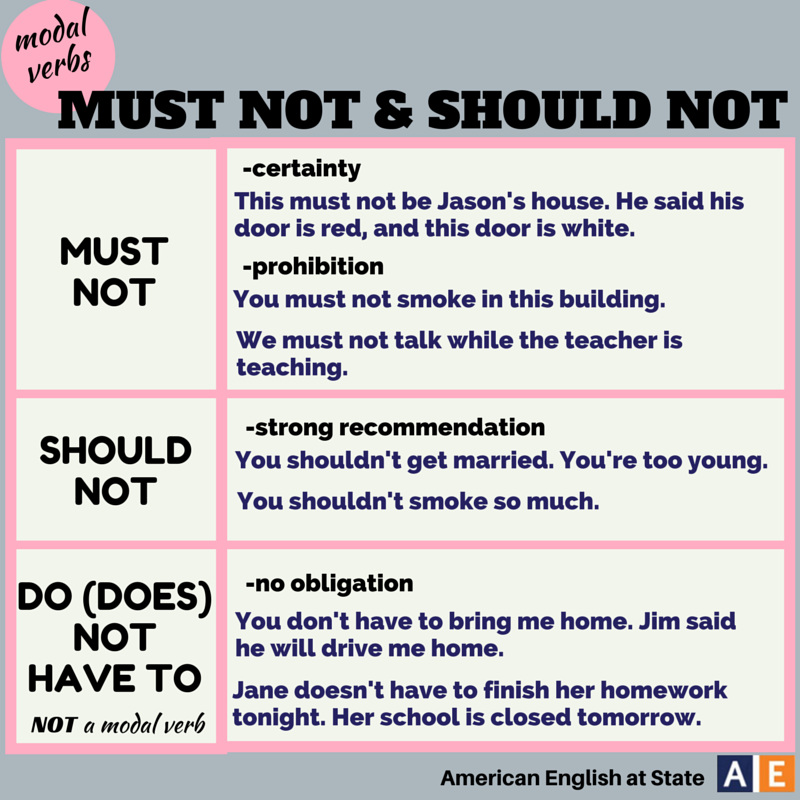
But sometimes, the reinstallation of them is enough.
Image from www.hondaatvforums.net
Another major cause of low compression is broken or defective inner gas valves. If the valves are damaged, the gas may leak from them.
Gas may also leak from inner valves if their opening and closing time is not synchronized. It is due to the loosening of springs. The valves do not sit in their place properly, or they overheat so much that it wears out their seals. So check those air intake and exhaust valves.
In each case, you have to check every piston. The only way to fix it is to replace it. You need to replace the valve which is causing the gas leak.
Image from www.oards.com
Two to four piston rings are around each piston to seal the air in the ignition chamber. Their purpose is to keep the crankcase and the combustion chambers material separated. Worn out or damaged piston rings let the gas or the fuel enter the crankcase.
It may also result in the leaking of oil into the combustion chamber. Both cases cause low pressure. Do a compression test to check it. If you find a leak, there is a makeshift remedy. You can pour some diesel into the cylinder.
Leave it there for some time. Then do a pressure test. It may solve the issue. But if you still find the leak, replace the rings or the piston immediately.
Image from www.teryxforums.net
A faulty head gasket causes the shift of compression to coolants or the other leaks. The head gasket ensures that every part gets its proper pressure. But a worn-out one will make pressure differences.
A pressure test can point out a bad gasket. If you are observing low compression on adjacent pistons, then the culprit is the gasket.
Other signs you can check are white smoke coming out of the exhaust pipe. The engine is overheating and too noisy. Spark plugs are getting damaged every short time. You may also observe the coolant leaking from the engine.
You may also observe the coolant leaking from the engine.
You can fix it, again, by replacement. But you need to take out the whole engine. It can’t be done without it.
Off-road are the core piece of riding gear for ATV & UTV riders
Find out the best look for you
Mostly a question is asked: will ATV run with low compression? The minimum requirement to run an ATV is 100 PSI. It needs at least 100 PSI to function well. So if it is below the limit, then the sweet answer is, No.
And most ATVs run on a maximum pressure of 250 PSI, but some can go up to 300 PSI.
Now you know how to check any problem that is caused by low compression. And you also know the measures to prevent it. The only catch is that it mostly requires a replacement, and you have to take the whole engine out.
Since now you can identify and fix the problems, your ATV will roar again to its fullest! Are you ready to see how deep you can go?
TARGET 20L Camo
WATERPROOF BACKPACK
32 EUR
22. 40 EUR
40 EUR
Explore all
Have you been experiencing trouble starting your ATV’s engine? How about some weird noises coming from the engine? If you answered yes, your ATV could have low compression. At times, the ATV might run well for a while, then suddenly quit or fail to speed up as much as it should. All of this can be quite annoying since it could mean time away from your beloved trails.
An ATV will run with low compression so long as the engine’s compression is at a minimum of 100 PSI. Depending on the engine, most ATVs have a compression ranging between 100 and 250, while others could go up to 300 PSI. However, an ATV whose compression falls below 100 PSI will not run well.
In this article, you’ll discover whether an ATV can run with low compression. You’ll also find more information related to the topic, such as:
When your ATV has low compression, you may see or experience some of the following issues:
Low compression leads to loss of power or poor performance in your ATV.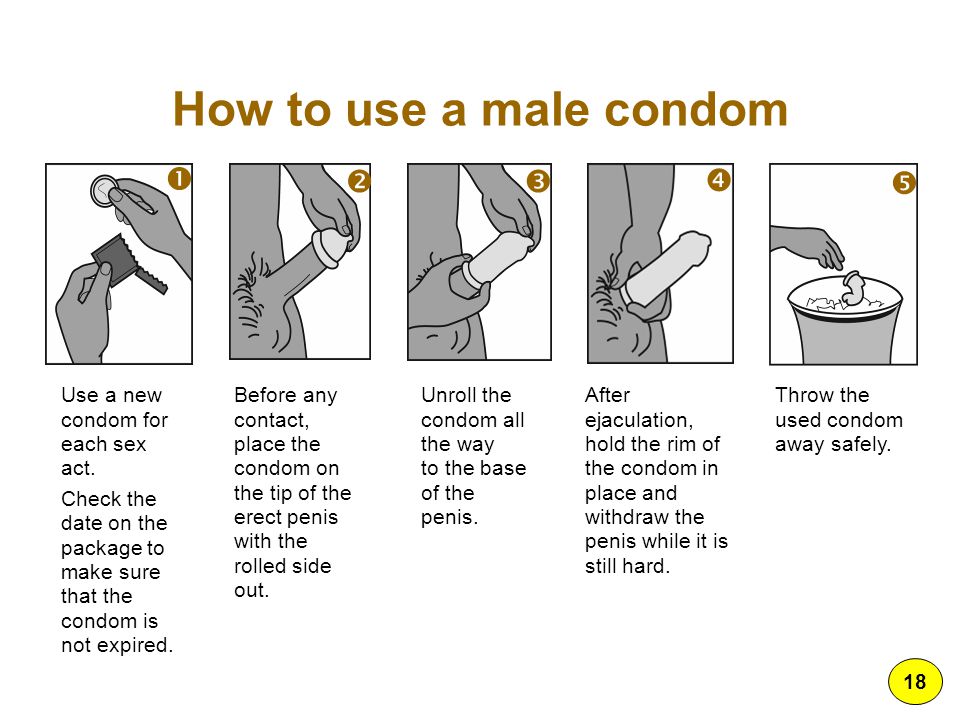 In most cases, problems arise either from wear and tear or the improper maintenance of certain parts in the internal combustion engine. As such, low compression in your cylinders could result from any one of the below issues:
In most cases, problems arise either from wear and tear or the improper maintenance of certain parts in the internal combustion engine. As such, low compression in your cylinders could result from any one of the below issues:
But that’s not all; other problems such as bad gas, a clogged fuel filter clog, or failure to get a spark could also cause power loss issues. So, you may need to rule these other culprits out first. However, if your low power issues persist, the first thing you may want to check out is the cylinder compression.
But first things first. Is the pressure gauge working correctly? If it is, run a compression test to try and diagnose the engine problems. When running this test, remember to warm up the engine first and have the throttle wide open.
A pressure gauge can fail to work properly if affected by dust, liquids, or improper care. It’s also important to point out that some pressure gauges might be unreliable. Such gauges bear tapered rubber ends, so you may need to hold on to the rubber plug to retain the seal. The best type of pressure gauge to use is one that threads perfectly into the spark plug hole, providing a tight fit.
It’s also important to point out that some pressure gauges might be unreliable. Such gauges bear tapered rubber ends, so you may need to hold on to the rubber plug to retain the seal. The best type of pressure gauge to use is one that threads perfectly into the spark plug hole, providing a tight fit.
To ensure that you’re using proper working equipment, test the accuracy of your pressure gauge by:
Check out this video to see how to do a compression test:
Now, let’s explore the common causes of low compression a little further. One thing to note here is that pinpointing the low compression’s exact cause usually entails disassembling the engine.
One thing to note here is that pinpointing the low compression’s exact cause usually entails disassembling the engine.
In an ATV engine, intake and exhaust valves help control the flow of fuel-rich air and exhaust into and out of the cylinders. As such, an improperly seated valve could hamper the cylinder’s ability to hold the correct compression. In addition, a cracked or broken valve can cause the piston to create inadequate pressure in the cylinder, thus failing to operate properly.
Other valve impairments include:
Tight valves can mess up the valves and seat pretty fast.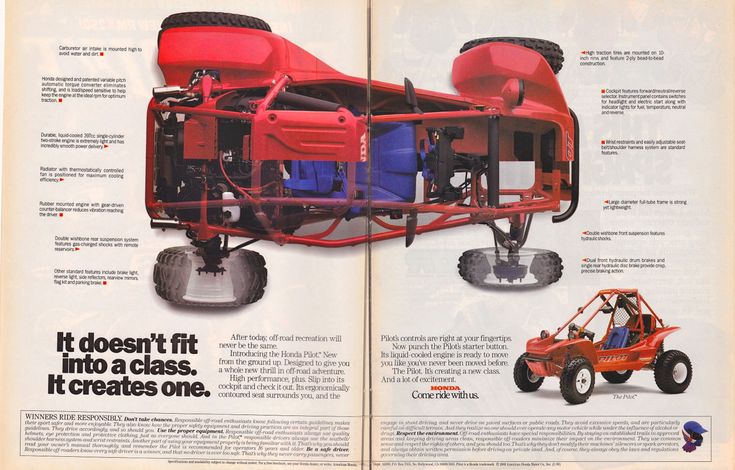 You see, whenever the engine fires, hot combustion gases get pushed back via the partially open crack in the tight valve. If not closed, these gases can erode the valve and seat incredibly fast. The valve can only cool down by returning to its seat momentarily and sinking off some heat. But since it’s not closing completely, it doesn’t get to cool off.
You see, whenever the engine fires, hot combustion gases get pushed back via the partially open crack in the tight valve. If not closed, these gases can erode the valve and seat incredibly fast. The valve can only cool down by returning to its seat momentarily and sinking off some heat. But since it’s not closing completely, it doesn’t get to cool off.
Performing valve adjustments can help sort out a noisy engine, but you need to ensure that you don’t make the valve clearance too small. When hot, the valves will not sit, which isn’t ideal for exhaust valves.
To repair or even replace spoilt valves or valve train assembly components, you need to remove the engine block’s cylinder head, followed by removing the valves from the cylinder head. But since the valve seats in the cylinder head need lapping or polishing before installing the new valves, it’s best to have a professional with the right tools perform the job.
Head gaskets take a lot of abuse given that they endure high pressures, extreme temperatures, and compounds that weaken the gasket material.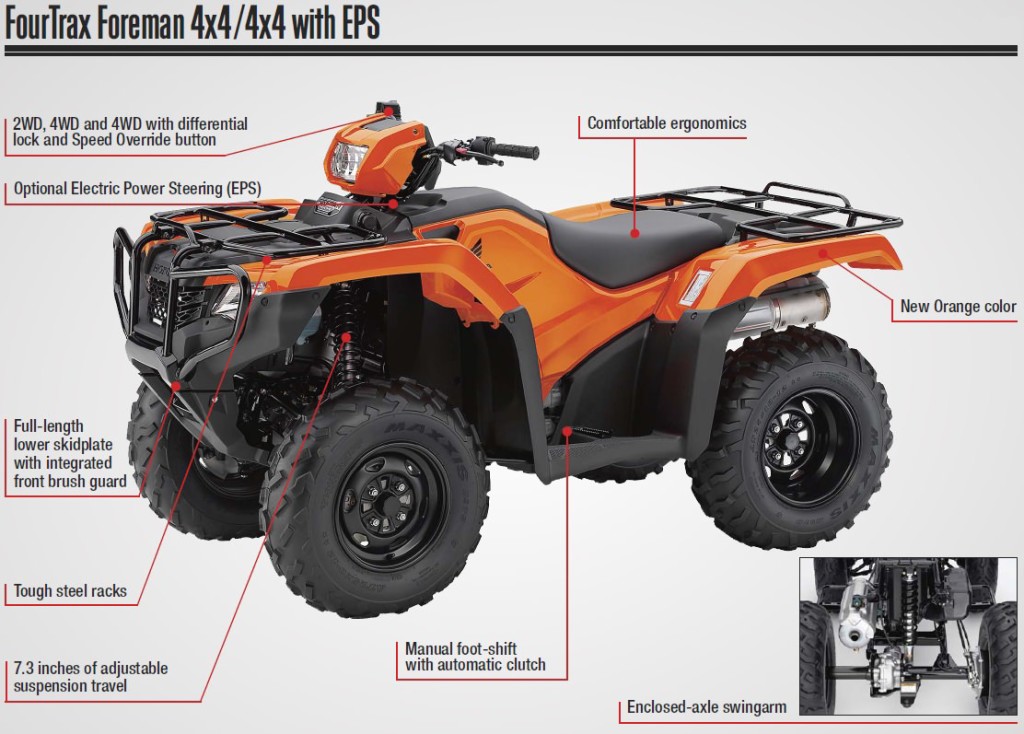 What’s more, even the tiniest imperfections in a head gasket are enough to hamper engine performance. In case of a head gasket leak, you’ll notice:
What’s more, even the tiniest imperfections in a head gasket are enough to hamper engine performance. In case of a head gasket leak, you’ll notice:
Any one of the above symptoms points to a bad head gasket. However, replacing a head gasket calls for unique skills, so it’s best to have a trained technician do this for you.
A loss of ATV performance accompanied by exhaust blow-by (smoke puffs) might indicate a problem with the piston rings. Piston rings tend to wear out but more so in high-performance ATV engines. Unfortunately, they can cause engine problems since:
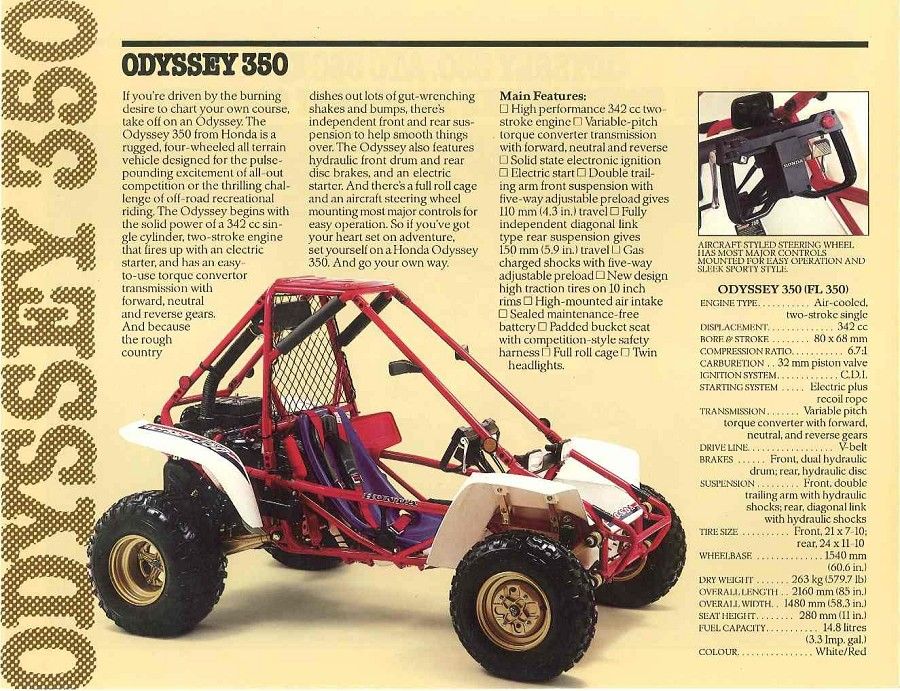
If your issue is well-worn or broken piston rings, take your ATV to the dealer for professional repairs as this requires an engine rebuild.
A hairline crack in a spark plug’s ceramic component can lead to low compression or lackluster performance. But if there’s no pressure loss in the compression cylinders, the most likely culprit could be the spark plugs. To fix the problem, the right thing to do is to replace all the engine spark plugs.
Below is a video explaining more on how to go about diagnosing low compression:
An ATV with low compression shouldn’t cause you too much worry – now that you know how to diagnose and sort the problem. However, if you’re not very confident in your mechanical skills, it’s best to take your ATV to your local dealer for any professional repairs. Also, it’s advisable to conduct bi-weekly or monthly compression tests so that you’re always in the know regarding whatever’s going on inside your ATV engine.
However, if you’re not very confident in your mechanical skills, it’s best to take your ATV to your local dealer for any professional repairs. Also, it’s advisable to conduct bi-weekly or monthly compression tests so that you’re always in the know regarding whatever’s going on inside your ATV engine.
Sharing is caring!
10/22/2015
ATV does not start? Don't know where to start troubleshooting? Then let's try to find out the main reasons why an ATV may refuse to start.
Unfortunately, the equipment of any manufacturer sooner or later starts to act up, no one is safe from this, but finding a malfunction and starting an ATV that refuses to start is not so easy, especially if you are far from a service station.
No matter how trite it may sound, the first thing to do is to check the presence of gasoline in the gas tank: believe me, very often a person tries to start an ATV with a dry tank.
Check if the engine power button is disabled, it is usually located on the steering wheel on the left side, and also pay attention to the fuses, one of them may have blown.
ATV does not start: reason No. 1
Next, take a multimeter and measure the ATV battery charge level: a charged battery should produce from 12.6 to 12.8 volts and confidently turn the starter, if the battery is low, charge it.
It is also necessary to pay attention to the battery terminals, they must be clean and not oxidized, and the clamping bolts must be tightened.
If, when trying to start the ATV, you notice that the starter does not turn, you must first check and, if necessary, replace the starter relay. To check if the starter itself is working, you need to make sure that the engine mass is in good condition (oxides, no contact, wire damage) and apply positive to it directly from the battery (observing the polarity), if the starter spins, look for a problem in the wiring. If there is no reaction to your actions, most likely the starter is out of order.
If there is no reaction to your actions, most likely the starter is out of order.
Check spark plug condition and spark. This is what a spark plug looks like when installed in a serviceable and tuned engine:
ATV won't start: Cause #2
In order to check the presence of a spark, it is necessary to unscrew the spark plug, insert it into the candle cap, lean it against any metal part of the ATV (do not forget about safety precautions: there should be no gasoline smudges nearby) and turn the starter, the spark should be confident and clearly visible . If there is no spark, it is necessary to replace the spark plug, if there is no spark, look at the wiring, and also replace the ignition coil.
Make sure your ATV's air filter is clean and saturated and that the air pipe from the filter to the carburetor is free of damage or blockage.
Determine if fuel is entering the carburetor, if the fuel filter is clean, if the fuel pipes are intact, clean the carburetor with cleaning fluids and blow out the passages.
ATV won't start cause #3
Determine if the fuel pump is bad. After turning on the ignition, you should hear the sound of turning on the fuel pump and pumping gasoline into the fuel system. It is also necessary to check the operation of the fuel pump relay.
ATV does not start: reason No. 4
A very common cause of poor engine start is a worn piston and, as a result, poor compression (as a rule, this applies to ATVs with decent mileage), compression can be measured with a special device, called a compression gauge.
ATV does not start: reason No. 5
Quite often the ATV does not start well in winter, but there is a set of measures that greatly facilitates the start of the ATV, you can get acquainted with them by clicking on the link.
Here are perhaps the most common malfunctions, in the presence of which the ATV will not start. We hope that the provided manual turned out to be useful for you, and finally we suggest you watch a video that shows how to start an ATV with a manual starter, because it is not as easy as it seems at first glance.
Source
All engine repairs are carried out by a highly qualified mechanic with extensive experience. There is a 1 year warranty on all work performed.
There is a 1 year warranty on all work performed.
Check the valve clearances according to the service manual for your Honda VTX 1800, and also after disassembling the head or replacing the timing chain, or when a characteristic "clatter" appears from the cylinder head.
Increased valve clearances lead to increased noise during engine operation, and if the valve clearances are too small, the valves will not close, and the engine will not develop rated power, and sometimes it is difficult to start.
Our Service Center carries out:
Please note that after adjusting the valves, in some cases it is necessary to synchronize the carburetors.
One of the most important mechanisms of the Honda VTX 1800 is the clutch. Although this is a fairly simple structural element, an important task is assigned to it. At the heart of the clutch is the force of friction between its discs. The torque of the motor is transmitted to the driven parts, which in turn transmit the torque of the gearbox.
Although this is a fairly simple structural element, an important task is assigned to it. At the heart of the clutch is the force of friction between its discs. The torque of the motor is transmitted to the driven parts, which in turn transmit the torque of the gearbox.
The need to repair the clutch in Moscow is dictated by various factors, among which we can distinguish an intensive mode of operation. In addition, Honda VTX 1800 clutch repair is in demand in case of planned wear of its individual elements.
As a result, the engine starts to idle incorrectly.